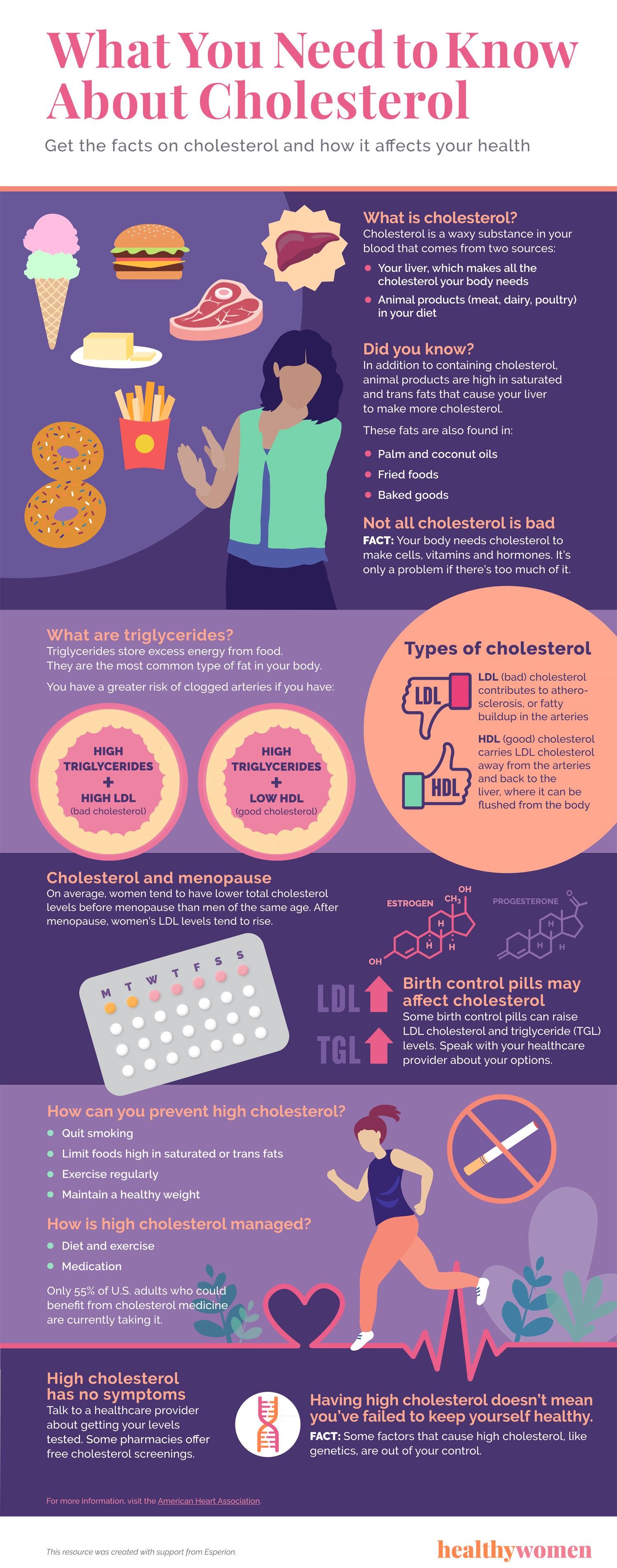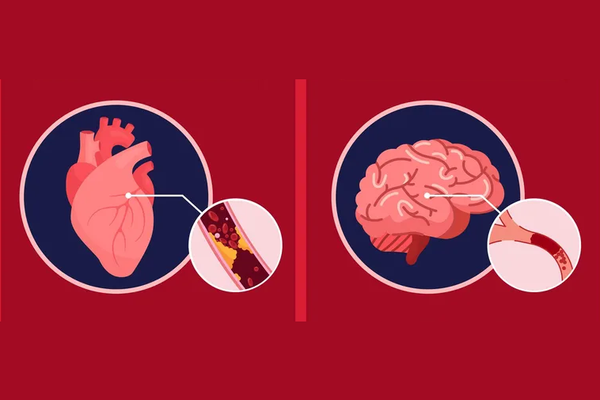What is cholesterol?
Cholesterol is a waxy substance in your blood that comes from two sources:
- Your liver, which makes all the cholesterol your body needs
- Animal products (meat, dairy, poultry) in your diet
Did you know?
In addition to containing cholesterol, animal products are high in saturated and trans fats that cause your liver to make more cholesterol. These fats are also found in:
- Palm and coconut oils
- Fried foods
- Baked goods
Not all cholesterol is bad
FACT: Your body needs cholesterol to make cells, vitamins and hormones. It’s only a problem if there’s too much of it.
Types of cholesterol
- LDL (bad) cholesterol contributes to atherosclerosis, or fatty buildup in the arteries
- HDL (good) cholesterol carries LDL cholesterol away from the arteries and back to the liver, where it can be flushed from the body
What are triglycerides?
Triglycerides store excess energy from food. They are the most common type of fat in your body.
You have a greater risk of clogged arteries if you have:
High triglycerides + high LDL (bad cholesterol)
or
High triglycerides + low HDL (good cholesterol)
Cholesterol and menopause
On average, women tend to have lower total cholesterol levels before menopause than men of the same age. After menopause, women’s LDL levels tend to rise.
Birth control pills may affect cholesterol
Some birth control pills can raise LDL cholesterol and triglyceride levels. Speak with your healthcare provider about your options.
How can you prevent high cholesterol?
- Quit smoking
- Limit foods high in saturated or trans fats
- Exercise regularly
- Maintain a healthy weight
How is high cholesterol managed?
- Diet and exercise
- Medication
Only 55% of U.S. adults who could benefit from cholesterol medicine are currently taking it.
Having high cholesterol doesn’t mean you’ve failed to keep yourself healthy.
FACT: Some factors that cause high cholesterol, like genetics, are out of your control.
High cholesterol has no symptoms
Talk to a healthcare provider about getting your levels tested. Some pharmacies offer free cholesterol screenings.
To learn more, visit American Heart Association/Cholesterol
This resource was created with support from Esperion.
- What’s Your Number? ›
- Simple Tips for Lowering Your Cholesterol - HealthyWomen ›
- Important Questions to Ask Your Health Care Professional About ... ›
- The Facts About Cholesterol Medications - HealthyWomen ›
- Questions and Answers About High Triglycerides - HealthyWomen ›








